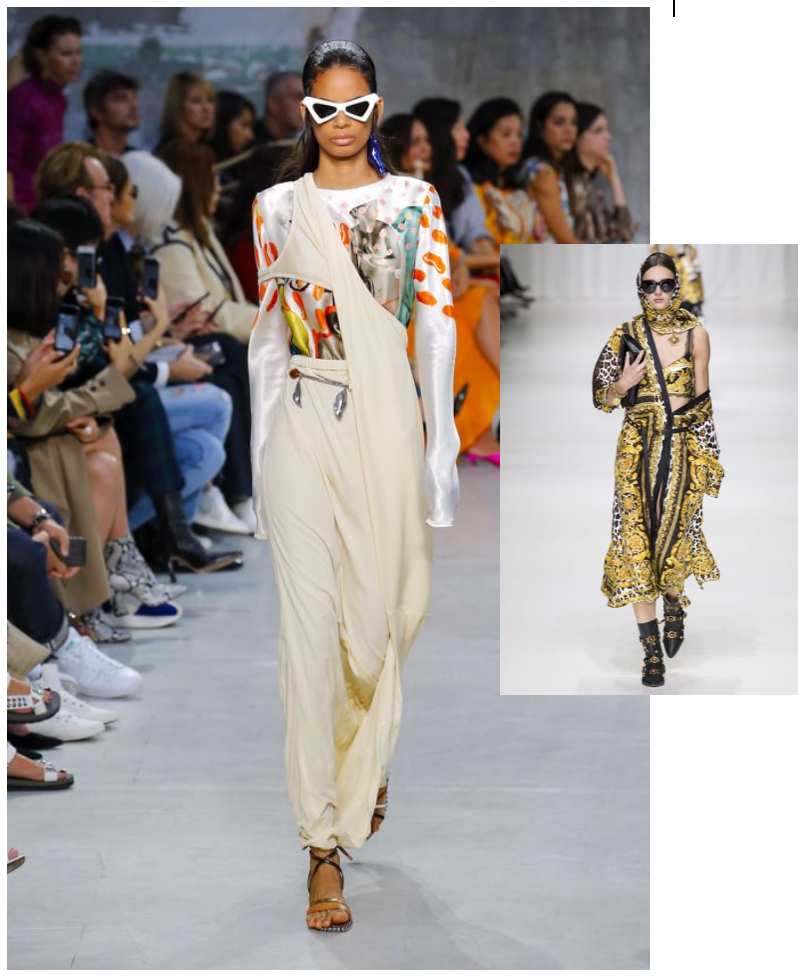FASHION CALENDAR CHAOS
- Ellie

- Dec 9, 2018
- 4 min read
In a recent lecture we looked at the fashion calendar, which sets the basis for all things fashion - from when show's are done to when collections are released.
The fashion industry traditionally works in two distinct seasons. Spring/Summer typically refers to the six month period from January to June, whilst Fall/Winter refers to the months from July through to December. However this can change slightly depending on the collection.
COLLECTIONS
COUTURE
Haute Couture fashion shows occur twice a year in Paris, in January and July. These are highly elegant dresses and roughly 100-700 hours are spent crafting each individual garment. These garments are very high prices, with many starting at around £10,000 per dress and very little profit is made from these shows.

READY TO WEAR
Ready to wear shows showcase garments which tend to be mass produced and are more accessible to everyone. These shows happen biannually, with AW shows occurring in February and SS shows in September. The shows are huge and millions of pounds are spent every year putting the shows together. After the shows there is usually a six month waiting period before the garments are available to buy, and then only a narrow three month buying window. These shows generally influence the main trends for that season which then high street stores such as Zara or Topshop then go on to reinterpret or recreate at a smaller price tag.

RESORT/CRUISE
Resort collections are commercial interpretations of ready to wear collections. Typically the shows are put on between November and May, and then the collections are available to buy for a short 5 month period window - usually between July and November. Designers produce special collections packed full of garments that you will wear on holiday - a combination of sun and winter holidays. Resort collections help reach the demand of luxury consumers who travel all the time.

PRE COLLECTIONS
A huge 'trend' in the fashion calendar is the use of pre spring/fall shows. Pre-Fall is desiged as an extra cash inout as having just 2 shows a year can cause cash flow issues. These collections are usually released at the end of Spring/Simmer the Fall/Winter collections are still being produced. The demand is there because the season changeover can be loss-making for fashion brands, with spring items having gone on permanent sale while fall items haven’t yet been delivered to stores. This also creates a lot of hype and excitement around the brand.

FASHION CAPITALS
Fashion weeks take part bi-annually across 4 different major fashion capitals. This is where fashion designers, brands or houses display their latest collections in runway fashion shows to buyers and the media. Each city has a different DNA and designers design their shows around this.
NEW YORK

Each year fashion week kicks off in New York. New York DNA consists of purity and minimalistic. The collections shown at NYFW have in mind the kind of people in New York that buy these clothes and typically these are working women who have busy lifestyles so the clothing seen here is often seen as 'practical' and active/street wear.
The key names for NYFW are Calvin Klein who year on year come out with collections that really show purity in fashion. More recently Off White have been huge and have become a well respected name in the industry cleverly showcasing a range of active wear yet practical 'working woman' styles.
LONDON

The second week takes place in London. LFW presents eccentric, rebellious, fresh ideas and new reinterpretations. A lot of the collections shown in London are heavily influenced by the punk scene which came to life if the 1980's. Another key feature of the garments produced for LFW is Heritage Tailoring. For me the collections in London feel like they have a historical context behind them yet feel up to date and fresh.
The key name for LFW is definitely Vivienne Westwood who shows rebellion really well through both her collections and context of the shows, challenging political beliefs, for example having a full gender free model line up.
MILAN

Milan is the third city in the fashion week schedule. Here collections are joyful and romantic yet colourful and sexy. The kind of garments that you see going down the catwalk are complimentary to the warm climate with a lot of flowy and loose fitting clothing. Yet the colour of the fabrics used are really bright reflecting the happiness of the sunshine.
Many of the biggest houses in fashion are based in Italy, for example, Gucci, Versace and Dolce & Gobanna to name a few. Which makes Milan fashion week a super exciting date in the fashion calendar!
Upcoming brand Marni have released really successful bold and bright colourful collections in recent Milan Fashion Weeks that really represent what Milan is all about and why it is such a key city in the fashion world.
PARIS

Last but not least is Paris Fashion Week. The Paris DNA is all about romantic, femininity and historical influences. Paris as a city will always be known as the 'City of Love', with a lot of the shows using this as an influence with the garments in the collections shown here are classic, elegant and timeless yet sexy and passionate. A lot of classic houses are shown here for example Balmain.
A big name for PWF is Chloe, a super feminine and romantic brand which is a really good reflection of what Parisian fashion is all about. We also see a lot of Old fashion houses with new guards for example Anthony Vaccarello for Saint Lauren or Demna Guasalia for Balenciaga.








Comments